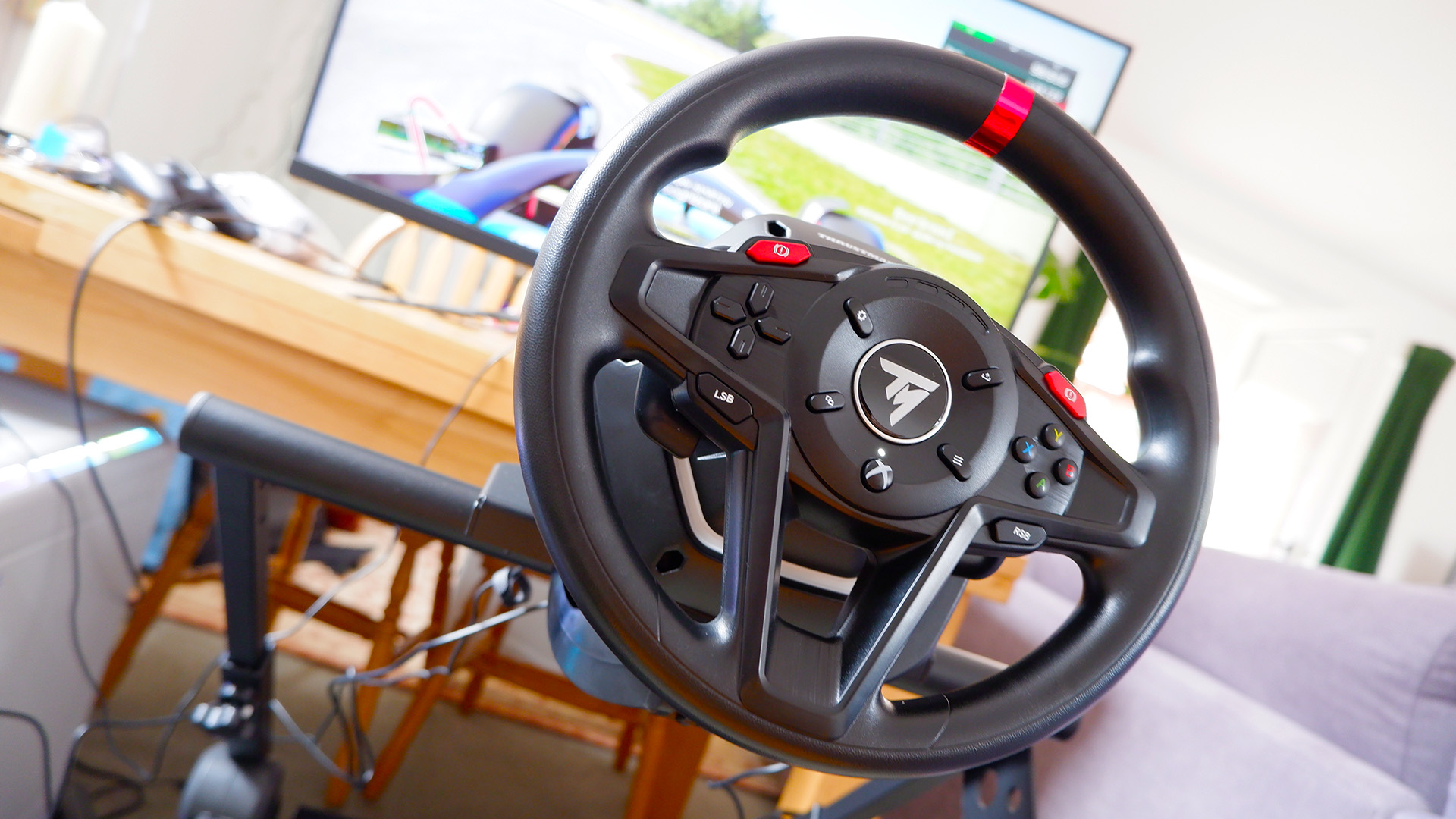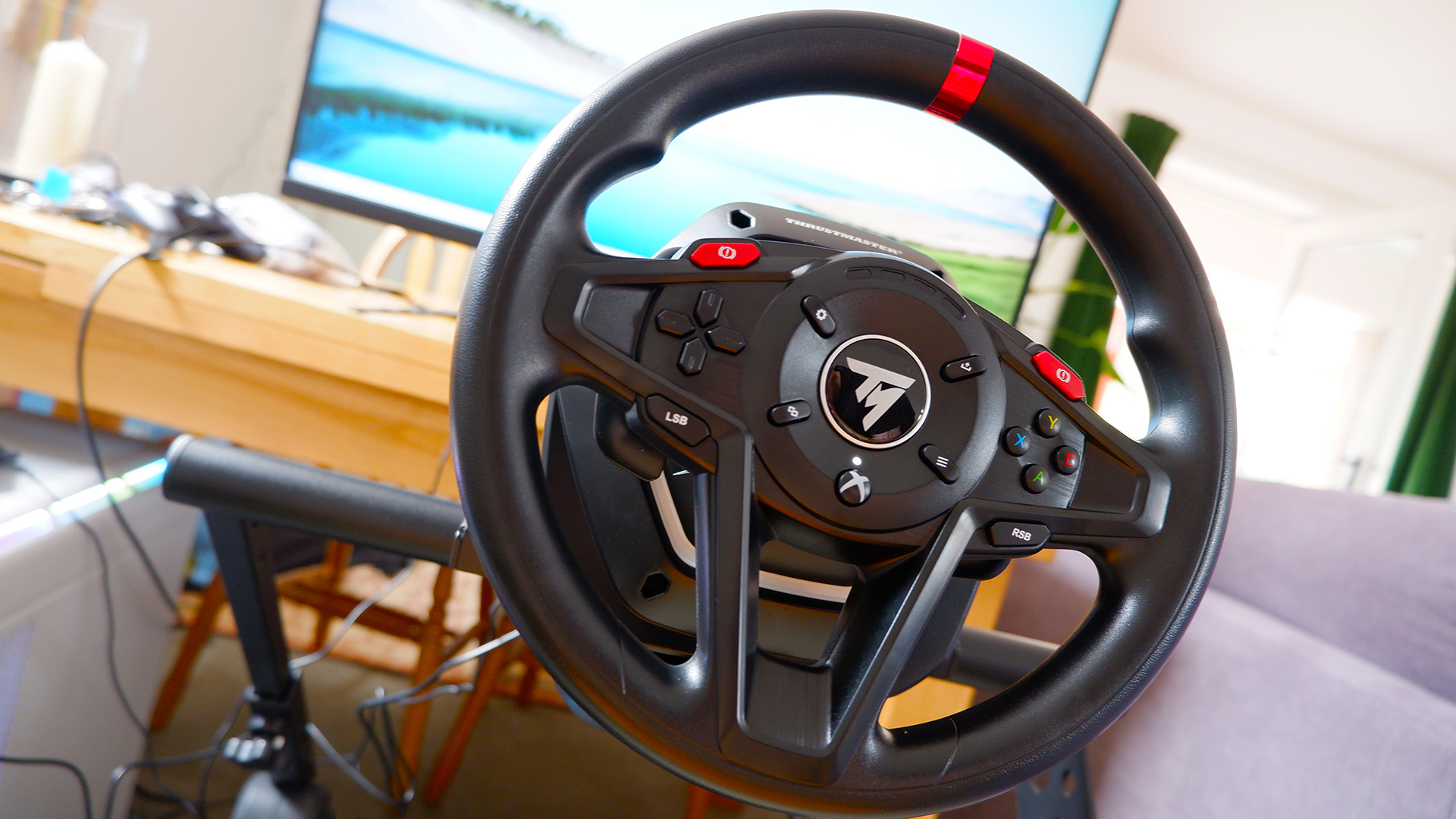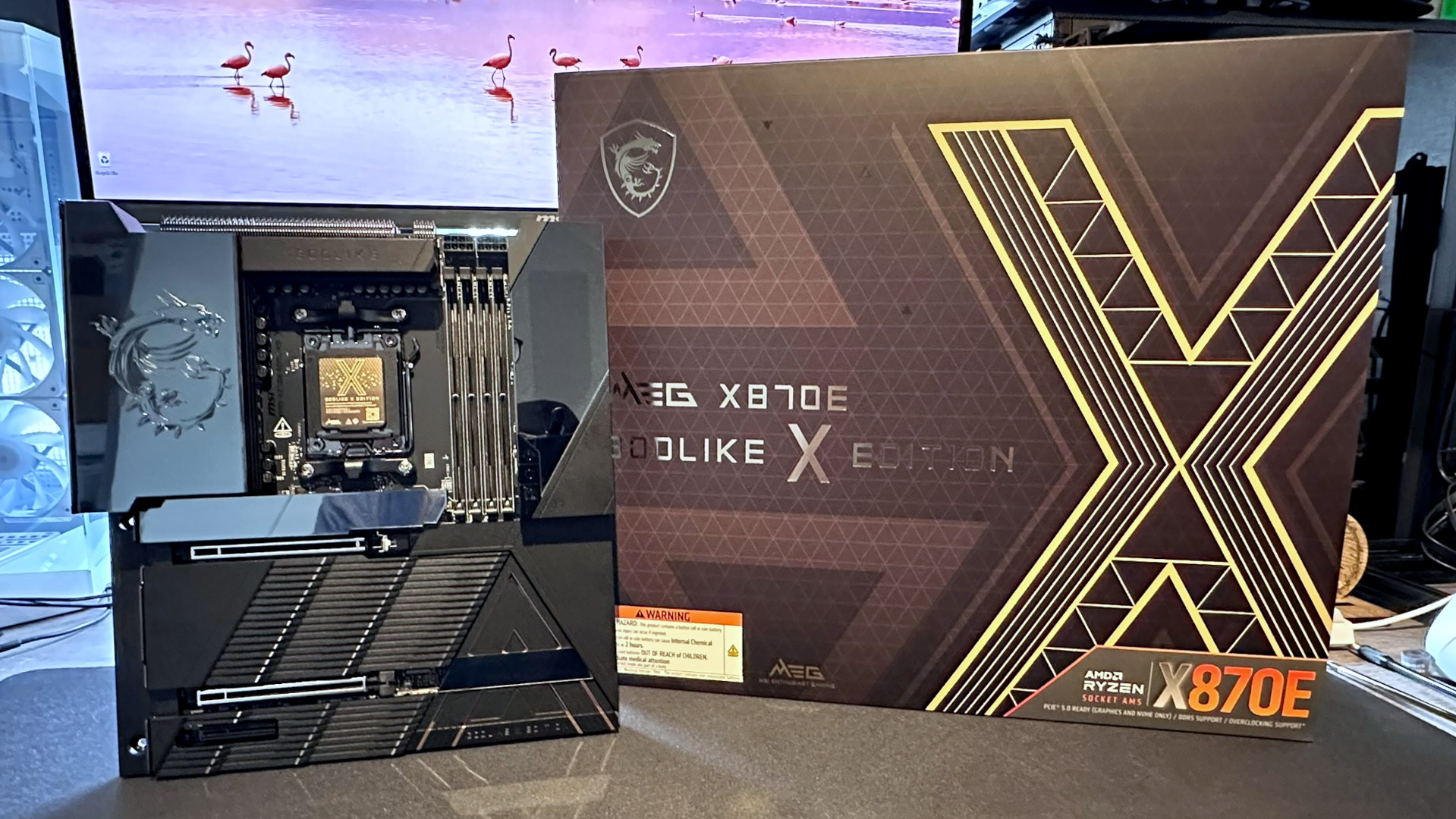Our Verdict
Look no further for the best entry-level racing wheel to buy today: the Thrustmaster T128 is it.
For
- Affordable
- Unbeatable force feedback in this price range
- Responsive
- Reliable paddle shifters
- Easy to navigate
Against
- Pretty rubbish pedals
- Lots of plastic
PC Gamer's got your back
The Thrustmaster T128 is the budget racing wheel to buy. I'll go into more details as to why, of course, but I wanted to make that very clear from the start of this review. If you've landed here because you needed a bit more reinforcement before you checkout, you got it. It's fantastic for the money.
At $200/£170, the T128 is the latest in a long line of successful entry-level racing wheels from Thrustmaster. Our previous pick for the best budget racing wheel was the Thrustmaster TMX Force Feedback, but the T128 is an improvement in every way on that aged design.
The key to the T128's success is that it shares the same Hybrid Drive system as found in the Thrustmaster T248. This drive is a combination of both gear and belt-driven force feedback, and while Thrustmaster has toned down the power on the T128 drive versus the T248, it's still noted as being 20% more powerful than the TMX.
My first impression of the hybrid drive on the T128 was just how smooth it is as you throw it around. It avoids the pitfalls of a purely geared system, which often feels clunkier, and feels much better for it.
While absolutely miles behind the best racing wheels in power, I really am impressed by how much grunt it has for its diminutive size. Wheel bases have shrunk a lot in recent years, as the technology, especially direct drive, has improved, but even on this hybrid drive system it's impressive how much bite it has for its footprint. If you hit a curb, you'll notice.
The most important part of the hybrid drive for me is how the resistance feels throughout the wheel as you turn it. It's great for accuracy while driving, and for developing your skills around a particular track. I've said the same thing for the T248, and it absolutely still applies here, but I feel like I can build on my lap times and make small adjustments to my cornering with that resistance and feedback through the wheel. That's great for more competitive racing games, such as F1 22 or Assetto Corsa. It's not so great for more fun-focused games like Forza Horizon. It's stiff, and throwing your car into a drift is easier on a looser wheel, namely the Logitech G923.
For the T128 to deliver that level of accuracy in a racing wheel on the cheaper side of things I'm really impressed.
Keep up to date with the most important stories and the best deals, as picked by the PC Gamer team.

There are a few things you should note about the T128, however. For starters, I did notice I made more errors while racing with the T128 than the T818 I was using only hours before. The difference in price between these two is astronomical, however, and I'm not supposing one is a swap-in for the other. But while this feels an accurate and responsive wheel, there's still a lot to gain with a larger wheel and much more powerful base.
The other is the build quality. The Thrustmaster T248 felt cheap versus the Logitech G923, and the T128 feels a whole lot cheaper than even that. There's no grip around the circumference of the wheel, which is sadly non-removable like the T248, and the buttons are made of a very cheap feeling plastic. I don't fear for its longevity, but I do feel it'll show signs of wear with time quicker than others. And the lack of grip isn't great if your palms get sweaty.
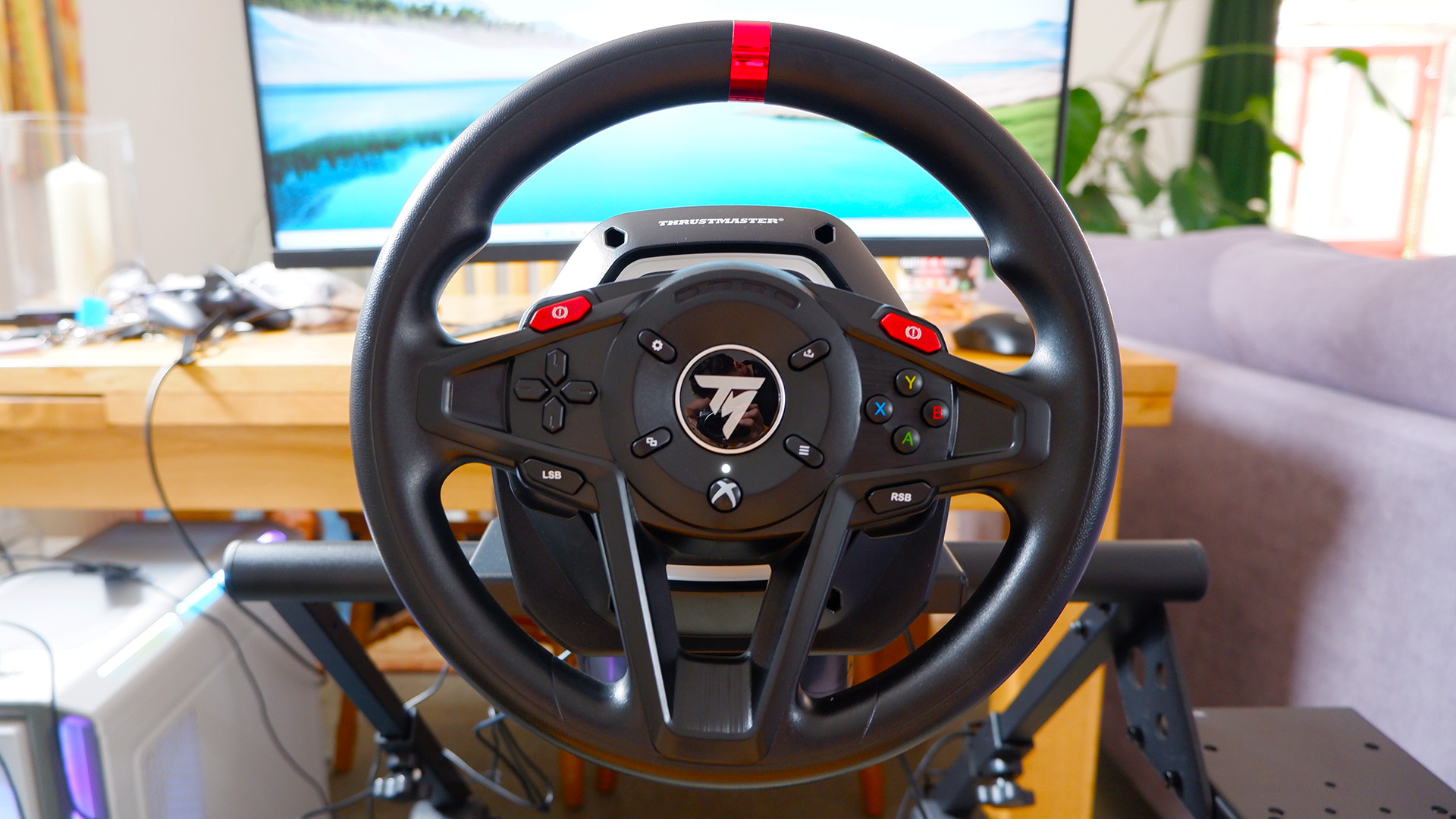
On the flipside, I do like the rev indicator provided by four different coloured lights, an obvious visual cue while racing, and there are plenty of face buttons within easy reach.
Then there's the paddle shifters. These are magnetic numbers on the T128, and noticeably cheaper feeling than the T248's or G923's. However, I never missed a shift while using them, and they're quick to return when you hit them. These are really decent for entry-level paddles.
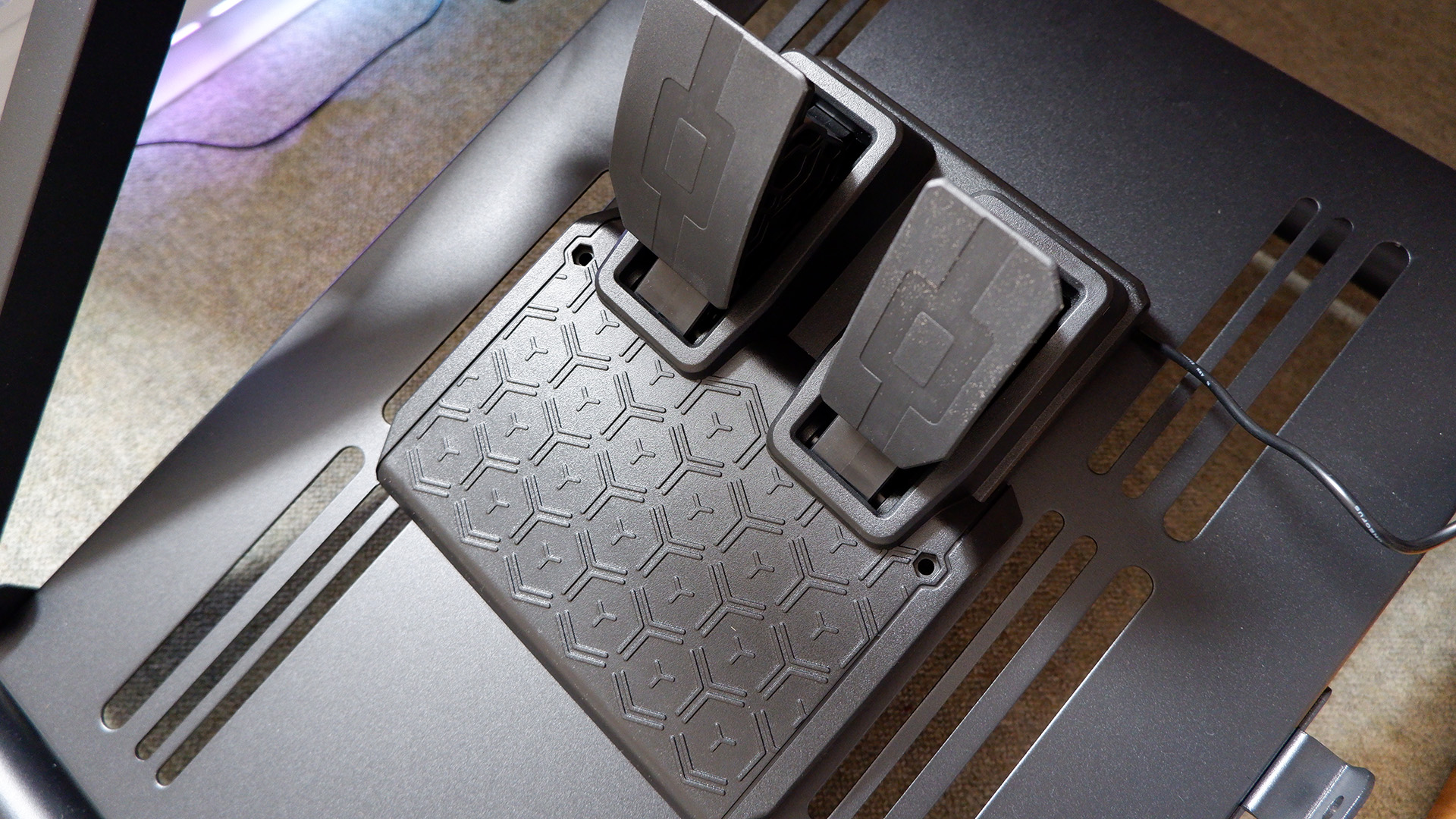
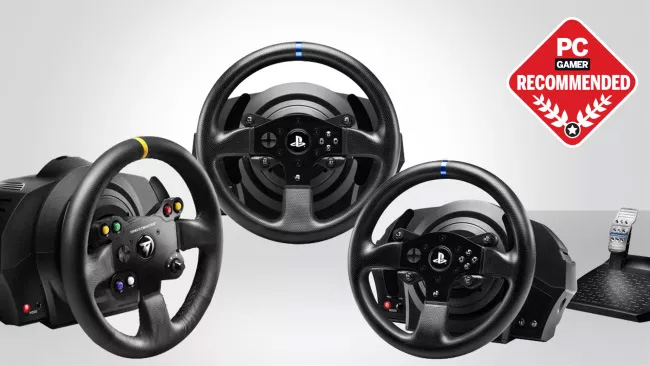
Best PC racing wheels : perfect for any circuit.
Best VR headset: which set is right for trackdays?
The T128's biggest letdown are its pedals. The twin-pedal T2PM set comes included and it doesn't feel great under foot. It's lightweight, plasticky, and moves about a lot while you're racing. That was especially frustrating as I thought I had a fix for that, the Monoprice Dark Matter GT Foldable Racing Wheel Stand, but there's no way to attach the cheap pedal set to it. The screw holes just don't line up.
Seeing as the much improved T3PM pedals are $100, which is half the price of the entire T128 kit, I can see why Thrustmaster hasn't included anything better. But that's definitely an upgrade I'd be keen to make with the T128 down the line.
Otherwise, the T128 is a stellar entry-level racing wheel. With more power than I had expected, and a much smoother action, this wheel is a really wonderful way of breaking into the sim racing scene without breaking into a bank. Make no mistake, this is the best budget racing wheel to buy in 2023.
Look no further for the best entry-level racing wheel to buy today: the Thrustmaster T128 is it.

Jacob earned his first byline writing for his own tech blog, before graduating into breaking things professionally at PCGamesN. Now he's managing editor of the hardware team at PC Gamer, and you'll usually find him testing the latest components or building a gaming PC.
